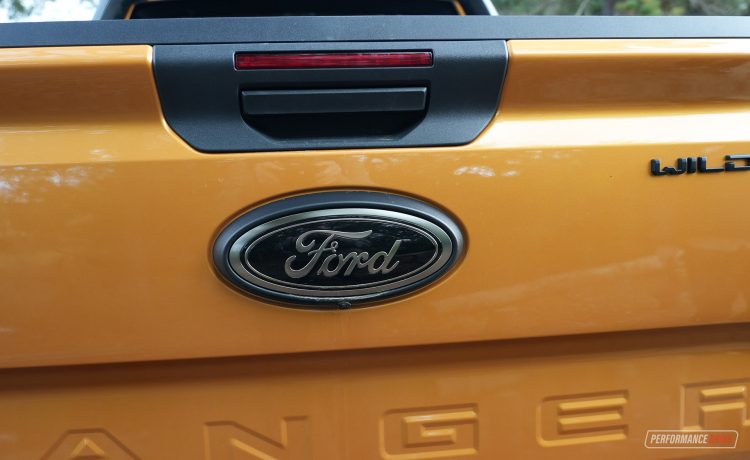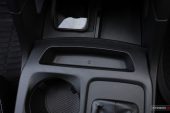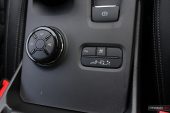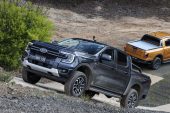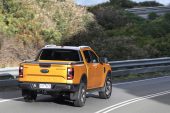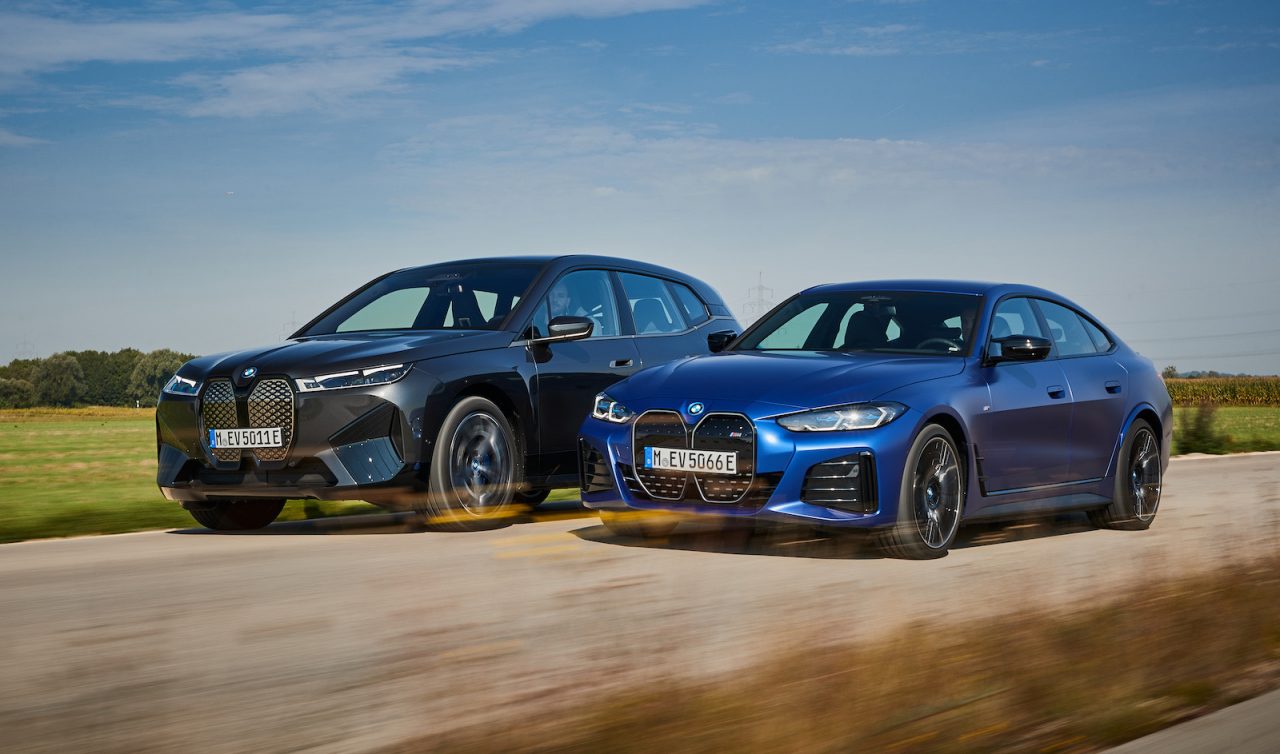This is it. The next-generation, 2023 Ford Ranger. We’re in Victoria as part of the official media launch event to test out a range of variants and powertrains for the first time, including the all-new turbo-diesel V6 option.
The new model continues to be based on the Aussie-developed T6 platform. In fact, a lot of the development for this new-gen model was done right here in Australia. That’s pretty awesome considering the trusty truck is sold in 180 markets around the world.
To kick off its arrival Ford Australia is offering five main variant grades in dual-cab form, spanning from the XL, XLS, XLT, Sport, and Wildtrak. The company says it will launch the single- and super-cab versions in the near future but first it is concentrating on its most popular layout; dual-cab. The epic new Raptor will also join the range soon.
There is no more manual option available as it accounted for around 1.5 per cent of sales in the previous model, so all get either a six-speed or 10-speed auto. See below for the starting prices (excludes on-road costs).
Today we’re mainly concentrating on the Wildtrak and Sport as these are the variants we drove the most during the event.
2023 FORD RANGER Wildtrak – THE SPECS
Engine: 3.0-litre turbo-diesel V6
Output: 184kW@3250rpm / 600Nm@1750-2250rpm
Transmission: 10-speed auto
Drive type: Part-time four-wheel drive, locking rear diff
0-100km/h (as tested): 8.42
Tare weight: 2335kg
Official fuel economy: 8.4L/100km
Starting price: $70,190
Engine: 2.0-litre twin-turbo 4CYL diesel
Output: 154kW@3750rpm / 500Nm@1750-2000rpm
Transmission: 10-speed auto
Drive type: Part-time four-wheel drive, locking rear diff
0-100km/h (as tested): 9.87
Tare weight: 2277kg
Official fuel economy: 7.2L/100km
Starting price: $67,190
2023 FORD RANGER – THE PACKAGE
Ford has applied so many practical-minded features inside and out, it is simply too exhaustive to mention them all. But some of the highlights include a handy step integrated into the rear bumper bar behind the wheels, an electronic roller shutter covering the tub for the Wildtrak, and a locking rear differential for most variants.
The 4×4 models welcome a new electronic drive control system, with uppers models offering a new ‘4A’ automatic mode for all conditions. There’s also a handful of specific terrain modes on some models, and the 10-speed auto has been revised and includes a new torque converter. Shifting is now more decisive and less, shall we say, CVT-like.
On the Wildtrak you get 18-inch alloy wheels in dark grey, wrapped in 255/65 all-terrain tyres. Although, most variants are available with special off-road options packs too, which include all-terrain tyres. See the table below for pricing and options:
The interior will blow you away. The technology and comfort initiatives applied make it more of an SUV than a rugged workhorse. Check out the size of that touch-screen, for example. It comes in either a 10.1-inch or 12-inch size, although they look pretty much the same on quick glance. And it’s standard on all variants. Yep, even the standard council-spec XL. It offers a very handy automatic front camera system on upper variants, complete with a camera washer (activated when the windscreen washer is prompted).
There’s loads of room for passengers and plenty of storage spots for all your things. The Wildtrak and Sport come with a wireless phone charger at the front and heated seats. But unfortunately, there is no seat ventilation available for those hot summer days.
Rear passengers get climate vents and a USB and USB-C charging port on the Wildtrak, or a 12V socket on lesser variants. Legroom remains pretty good for this class, with decent headroom as well.
Up at the back the tray tub in the Wildtrak offers a 12V socket in the wall, and the tub itself is bigger than ever before. It’ll now accommodate a standard pallet between the wheel arches, for example. It couldn’t before.
During the event Ford showcased a fully kitted out example, showing off some of the optional accessories by ARB that buyers can tick. And this time the parts will be available during the time of purchase, at Ford dealerships. The parts are covered by Ford’s factory warranty, too. That’s because ARB was involved early on in this model’s development.
The parts have been engineered for the vehicle, not after it was born but during its conception. Take the bull bar option. These can include full integration of the parking sensors and the front camera system. Even the camera washer comes with it. Under the surface Ford says some of the mounting points are pre-drilled for easy installation, and there’s even a towing pack available with wiring fully embedded.
Ford Australia says it took in more customer feedback than ever before during the design and development of the new model. And it genuinely shows. Every little detail makes sense and fits, and the interior layout is ergonomic, comfortable and practical. That sounds like a lot to boast but it really does present well.
Take the dashboard as an example. It’s flat, upright and pushed as far forward as possible. This not only conforms with Ford’s design language in the USA with its F-Series trucks, it also allows for as much passenger space and general cabin freedom as possible. So it feels open and spacious.
One thing we’re not sure about is the double glove box on the Wildtrak. The top section flips up to provide a secondary cavity, perfect for receipts and other odds and ends. However, for some reason this area is just a closed panel on all other variants. And it’s almost exactly the same panel design as the lid on the Wildtrak. Surely the company could have just provided the storage for all variants?
The Wildtrak also gets pop-out cup holders at either ends of the dash, but on lesser models there’s a rather useless little cavity just big enough for business cards – which will fall out if you add more than one in there. Again, why not just fit the cup holders to all models? After all, the bits are there and ready to go.
Despite seeming like it exists as a higher-order being, you don’t necessarily need to jump straight to the Wildtrak to enjoy the latest Ranger experience. We had a short drive in the XLS 4×4 variant during this test and just can’t figure out how Ford has managed to compile so much stuff into a relatively base-spec vehicle. Prices start from $54,330.
It comes with a big vertical touch-screen, albeit measuring 10.1 inches instead of the 12-inch unit on every variant above. You still get the full digital instrument cluster and pretty much all functionality and display options, a rear diff lock (electronic type), and even different driving modes to play around with including some terrain presets.
For more, you can option for the Tech Pack which adds embedded sat-nav – a great option for those looking to travel into remote areas that lack phone reception – dual-zone climate control, digital radio, push-button start, and voice recognition. You’d be mad not to go for this pack if buying an XLS 4×4 as it is just $750 more.
In fact, the XLS becomes a very tempting option we think, especially for buyers that are new to the recreational ute experience. If you do some pre-browse cross-shopping, you’ll find the XLS with the Tech Pack actually stacks up as a far better value proposition than many higher-spec rivals, in terms of creature comforts, utility and technology.
If you can stretch your buying capacity, the Wildtrak is obviously the main attraction. It’s the one that everyone desires. It’ll likely hold the most value over time as well, helping to keep you in the members’ lounge for the next generation.
The new Wildtrak is overflowing with kit. The big 12-inch screen is pretty good. Although, it does give off some serious heat after extended use and we’re not convinced on the ‘home page’ layout as it’s more of a drop-down menu than a common hub. But seriously, look around in here and try and find something that’s missing.
Ford designers tell us they spent a lot of effort making sure all of the touch areas had pleasant and fitting materials. Whether it be soft to touch or grippy or durable. This effort is heightened in the Wildtrak, and even in the XLT and Sport. The XLS has a plastic steering wheel while the others offer leather wrapping. The seats and sections of the dash are also nicer visually and for tactility.
You also get some really cool features such as exterior zone lighting (optional on XLS and Sport) that provides selectable illumination on all sides of the vehicle – these can be controlled on your phone via the Ford Pass app – overhead pilot-style auxiliary switches with wiring (for spotlights and so on), full surround-view parking cameras, and aluminium side rails for the tub that can be used for tie-down or as a grab handle.
Ford says it has hidden a few ‘easter eggs’ around the new model. We tried to find them but we weren’t exactly sure what to look for. We did find a little French fries logo in the storage slot on the upper variants, and noticed the Ford badge on the tailgate is blue on the 2.0TTD models and black on the V6 models. We’re not sure if these are part of the fun or not, but we found the attention to detail interesting.
2023 FORD RANGER – THE DRIVE
The new 3.0-litre turbo-diesel (single turbo) is an evolution of Jaguar Land Rover’s old V6 diesel, which was also employed by Ford Australia for the Falcon-based Territory. Later in life the unit was heavily redeveloped and made its re-debut in the 2018 Ford F-150 as the 3.0 Power Stroke. Ford in the USA then killed off the engine mainly due to lack of demand in the region.
What does this all mean now? For starters, Ford has made some significant revisions for the V6 in the Ranger. On-paper specs look really good, with 184kW and 600Nm. It stands near the very top of the class. And certainly offers more grunt than many of the key competitors that are only offered with a four-cylinder diesel.
Zooming in on the specs we see peak power is achieved in the meaty middle part of the rev range. Compared with some premium European diesel engines of this capacity, one could argue that the power needs to be spread across a window of some degree. Nonetheless, 3250rpm is totally accessible. It means you don’t need to rev the guts out of it to experience and explore its reach, but it also means you get plenty down low.
Torque, however, is spread but only in a very narrow window. You have the full 600Nm, which is an impressive amount, available between 1750-2250rpm. In modern petrol and diesel vehicles we’ve noticed manufacturers have been able to spread the torque almost entirely across the rev range. Even though 500rpm is a small window, you only need to breathe on the throttle to get things really shifting.
On the road it feels responsive and very smooth. It actually seems quieter than the 2.0L bi-turbo diesel option (we’ll do our usual decibel checks during our full reviews in the near future). You get a faint V6 hum, and not much else. As hinted earlier, you do not need to apply much throttle input getting away from the traffic lights. If you’re in a rush, applying more throttle causes a heaving shove before it steams ahead.
The top-end power and torque isn’t as impressive as the low-down stuff, and, to be honest, there isn’t quite as much oomph during highway overtaking as we were expecting. Even still, when compared with its predecessor – the 3.2L five-cylinder – this unit easily out-performs in every way.
We clocked some 0-100km/h runs with the Vbox during this event on a quiet strip of country road. The best result we recorded was 8.42 seconds. That was in 4A (four-wheel drive automatic mode) with the traction control off and building the engine revs on the brake before setting off.
In the default RWD mode without bringing the revs up on the brake, the Wildtrak posted a time of 8.75 seconds. It’s certainly quick enough for its intended purpose, and quicker than any predecessor. All good stuff. (Tests were conducted in the Wildtrak, which is the heaviest in the range. We aim to test the Sport or XLT with the V6 in the near future.)
Also good is the fuel economy. Ford lists the official consumption at 8.4L/100km. That’s a decent chunk better than the old 3.2 Wildtrack, which was rated at 8.9L/100km. This new V6 option has an emissions rating of 222g/km, again, bettering the 3.2’s score of 234g/km – in auto Wildtrak forms. During our test the trip computer displayed an average of around 10.2L/100km, however, keep in mind the event ran for two days and included off-road driving.
During the event media had the opportunity to test out the off-road performance in some mild to fairly serious conditions. We also tested out things like the hill descent control system, break-over and approach and departure angles, and overall mud-ripping abilities at the Australian Automotive Research Centre.
The vehicles performed brilliantly the entire time. With no scrapes or scrubbing to be reported. Wading through around 600mm of water was also a breeze. Although, we’re not sure about the low positioning of the air intake on both engines, as it looks like it would be quick (and easy) to take a big gulp during crossings if you’re not careful.
On the road the Ranger remains as one of the most stable and nicer-handling utes in the fleet. The steering is fairly generic but conveys what you need to know. Body roll is also minimal. All-terrain tyres might not be the option for you if you’re intending to travel mostly on tarmac roads, because they tend to roar a bit and braking performance isn’t as good.
2023 FORD RANGER – THE VIDEO
2023 FORD RANGER – THE VERDICT
Well what a marvellous evolution of an already-great proposition in this tough and demanding vehicle segment. This new model blends recreational fun, rugged dependability, refinement, and sheer utility and practicality better than ever before. And you can’t ask for anything more for a next-gen anything. Job well done.
As usual, we recommend heading into a dealership and taking one (or a few) for a test drive, as the new range can be quite overwhelming. There are many options and avenues you can go down. But the best thing is Ford is likely to cater to your needs more comprehensively than before.














